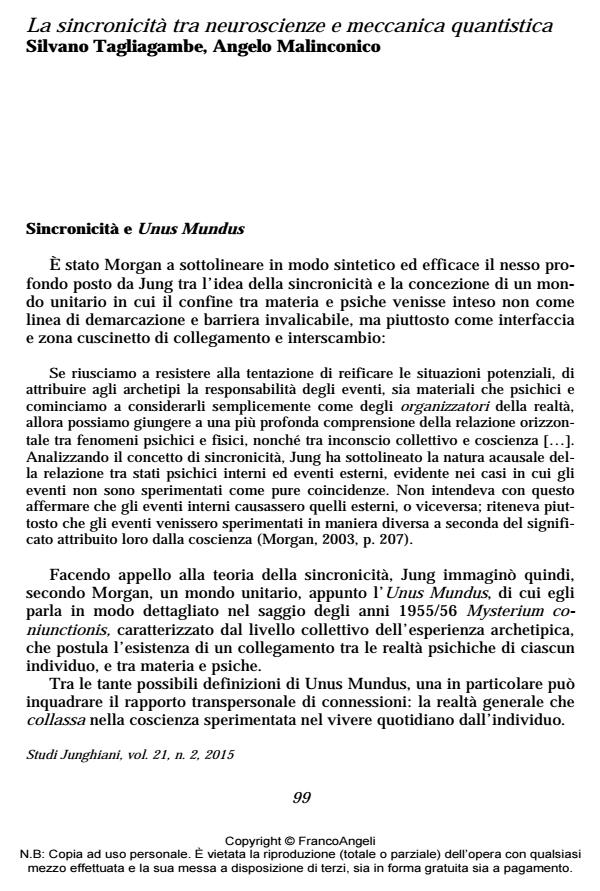Synchronicity between neuroscience and quantum mechanics
Journal title STUDI JUNGHIANI
Author/s Silvano Tagliaganbe, Angelo Malinconico
Publishing Year 2016 Issue 2015/42
Language Italian Pages 32 P. 99-130 File size 160 KB
DOI 10.3280/JUN2015-042007
DOI is like a bar code for intellectual property: to have more infomation
click here
Below, you can see the article first page
If you want to buy this article in PDF format, you can do it, following the instructions to buy download credits

FrancoAngeli is member of Publishers International Linking Association, Inc (PILA), a not-for-profit association which run the CrossRef service enabling links to and from online scholarly content.
The focus of this article is on the contribution of the two scientists, W. Pauli e C.G. Jung, regarding the changes underwent on the concept of "physical object", on the one hand, and of "subject" and "psyche", on the other. According to Pauli and Jung, the individual has an undeniable ability to be in contact with a universal matrix, in which spirit and matter are interpreted as the subject of a holistic science. This coniunctio between the so-called "scientific knowledge" and "humanistic research" gives concrete form and status to the scientific ancient alchemical dream. Pauli is interested in the Jungian nuclear concepts, such as those of Symbol and Archetype: Pauli believes that science is based on these concepts, and proposes a theory about a "matching" of meaning. Thanks to Pauli’s encouragement, Jung systematizes his theory of synchronicity and the idea of the Self as a potential center of psychic phenomena, around which the Ego rotates.
Keywords: Unus Mundus, Synchronicity, Holistic Semantics, Dual Body, Hypnosis/ Ultrasound
Silvano Tagliaganbe, Angelo Malinconico, La sincronicità tra neuroscienze e meccanica quantistica in "STUDI JUNGHIANI" 42/2015, pp 99-130, DOI: 10.3280/JUN2015-042007